Marcello Mariani, Mattia Moreni - new principles of figuration
1970 / 1974
Mattia Moreni and Marcello Mariani represent, from the painting experiences of the early 70s, two examples of poetic and formal freedom for some coinciding aspects. Setting aside for a short time informal painting, they proceed with originality to distant shores of figurative derivation, often imbued with a feverish light, yet softly sensual. A kind of "erotic God" moves their neighboring post-informal experiences to guide their poetic wandering in unexpected directions. Color mutations, ancestral shades, cuts, wounds, and backgrounds of diaphanous colors are all there. Marcello Mariani’s pink and red are the flesh tones of bodies deformed by harmony, waiting to dissolve into new cellular spaces.
The meta-historical sweetness of Mattia Moreni brings it all together in a poem that is mysteriously shadowy, an enigmatic symbol of new distant worlds. Not-watermelons are mocking imitations of a feeling of poetic unconsciousness, forms of a pre-existential mystery that foreshadows a poetic act from humanoid sunrise. Our artists come back to desire, evoking gates of earthly love. Transcendent pictorial eroticism and vagueness of memory, a distant nostalgia resurgent in sudden new principles of figuration.
MARCELLO MARIANI
"on the balcony lit
by the moon
there is a white petticoat
waiting to be
dirtied"
Marcello Mariani, 1971
Marcello Mariani was born in 1938 in L’Aquila. His first solo exhibition dates back to 1954. In '56 knows Osvaldo Licini. In 1958 he exhibited in Paris where attended Jean-Paul Sartre. In Naples, during the studies in the Academy, he studied under Domenico Spinosa and Antonio Scordia. In '60 deepens in Rome knowledge of Bruno Lisi and Luigi Boille. He met Robert Rauschenberg, Conrad Marca-Relli, Willem de Kooning, Tal-Coat, Franz Kline. In '64 he founded with Giuseppe Desiato "Group 5". In '74 he meets Joseph Beuys in Abruzzo and he works in his studio in L'Aquila with Piero Sadun; In the same year he exhibited in Civitavecchia with Accardi, Consagra and Guttuso. In 1977 he exhibited with Brindisi, Marotta and Marinucci at the Ferri Arte Gallery. In '79 he exhibited at the Center of Modern Art in Melbourne. In 1984, at the Spanish Fortress of the National Museum of Abruzzo in L'Aquila, it was inaugurated its first post-informal retrospective "Archetypal Shape Harmony". In 1987 and in 1988 is present in "Current Alternatives" curated by Enrico Crispolti. In the ‘90 he exposes with Conceptual Art masters (Pistoletto, Kounellis, Mauri, Accardi, Paolini, Catalano etc) and holds a series of exhibitions on Neo-Informalpainting curated by Vito Apuleo, which will conclude with the two international appointments in Melbourne in 1998 and 1999. The year 2000 begins with a series of exhibitions curated by Giorgio Di Genova on Marcello Mariani’s, informal art placement in today's research. In 2006 he inaugurated the exhibition "The Colors of the Sacred" by Silvia Pegoraro at the Experimental Museum of Contemporary Art in San Domenico. In 2007 he exhibited with Burri, Vedova, Marca-Relli, Pollock, Kline, Afro, Tapies. in the exhibition "In the Sign of the Matter: European and American Informal Painting"; In the same year he released the book-reportage by Gianni Berengo Gardin: "Marcello Mariani, Paths of Light." In 2008 the book was presented at the Fondazione Mazzotta in Milan. In 2009 he exhibited at Palazzo Venezia National Museum in Rome, in the retrospective exhibition "The Pictorial Way to the Sacred, 1957-2007, curated by Gabriele Simongini with texts by Claudio Strinati and Enrico Crispolti. In 2009 he exhibited at Palazzo Venezia National Museumin Rome. 2011 is the year of the 54th Venice Biennale with Vittorio Sgarbi and the exhibition at Vittoriano Monumental Complex in Rome with Louis Godart in the exhibition "The Italian Art Unity in Diversity of the Regions". In 2012 he exhibited again at the Vittoriano with Luigi Boille, Vasco Bendini and Giulio Turcato. In 2015 he is represented in Milan at the EXPO Italian Pavilion with Berengo Gardin and at Le Stelline Foundation in a documentary exhibition with Lucio Fontana.
MATTIA MORENi
".... after ten years
a little bit at a time
they have again become
landscapes - clouds
signs - fields
trees - watermelons
and other metamorphosis:
from the fur to fields
from wanded watermelons
to feminine ambiguity ......
as a sign
of extreme decadence"
Mattia Moreni, 1971
Mattia Moreni was born in Pavia on Nov. 12, 1920. He studied at the Academy of Turin with F. Casorati. Between 1947 and 1948, in tune with the cultural climate of the time, he proposed a cubist syntax of Picasso's footprint. In 1956, at the suggestion of Michel Tapié, he decided to move to Paris, where he lived for a decade. In 1966 he left Paris to settle in Romagna, near Brisighella, in the "Calbane Vecchie” farmhouse. In contrast to the growing commodification of art, he courageously brought his research to extremes, emphasizing provocative meanings. In 1964 he started work on the cycle of "Watermelons", to which he dedicated himself for over 12 years, and which brought together a significant selection in the personal room at the Venice Biennale of 1972. Starting from an initial naturalistic representation of the fruit, Moreni, in a short time, subjected the watermelon to a disturbing metamorphosis, which, with increasing aggressiveness and provocation, made it take the form of an organic body with a dramatically highlighted wound. Starting in the mid-seventies he began to write titles and words in large letters on the canvas, so that in the continuing dialectic between the two languages the phrases became ever more intrusive protagonists of the pictorial discourse. In 1981 he published “The Principle of Humanism End”. With the solo exhibition in 1999 at the Palace of Exhibitions in Faenza, he presented the latest paintings, in which he made culminate the abnormal anthropological mutation of man by reducing it to an absurd hyper-technological appliance.
















